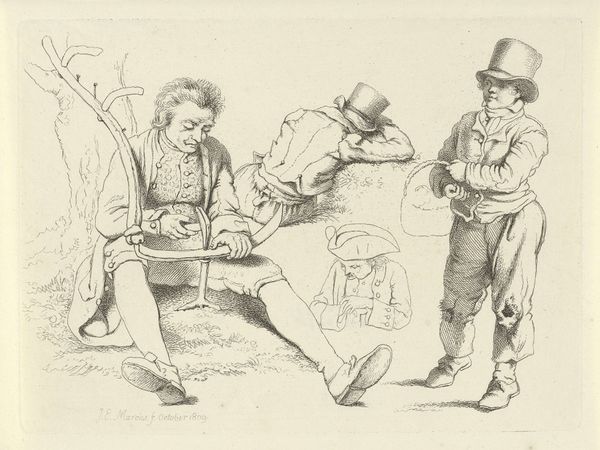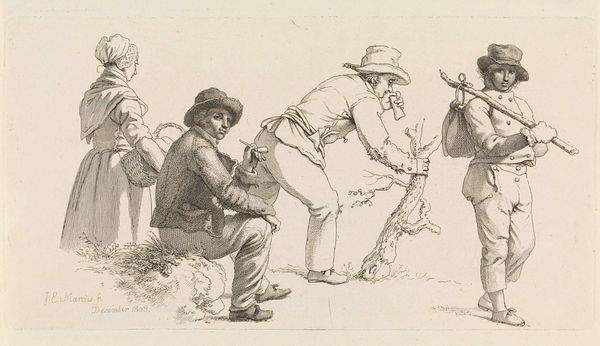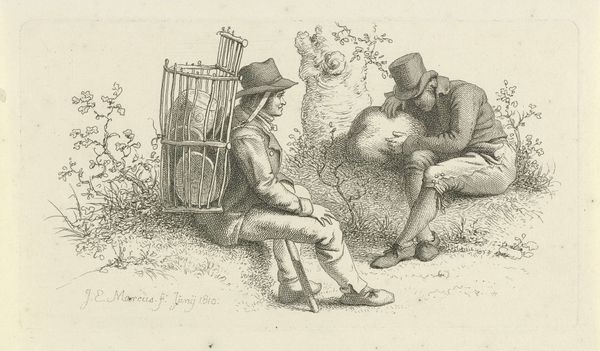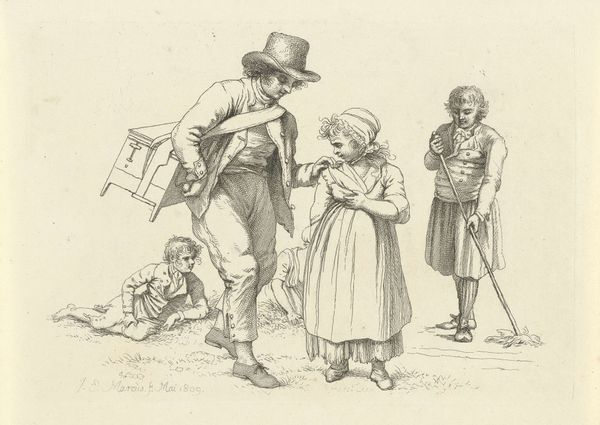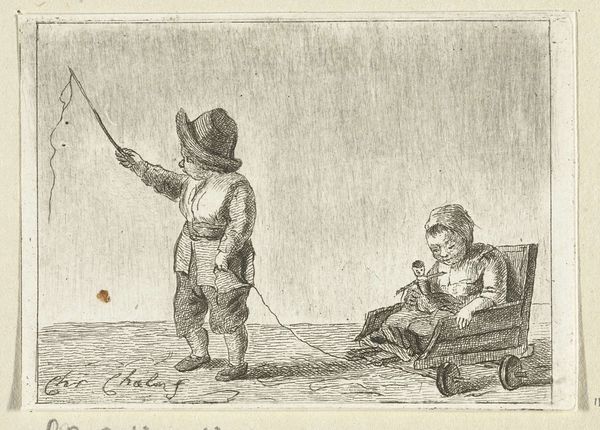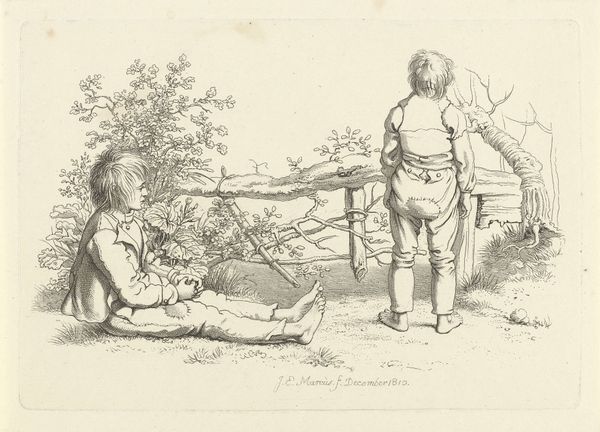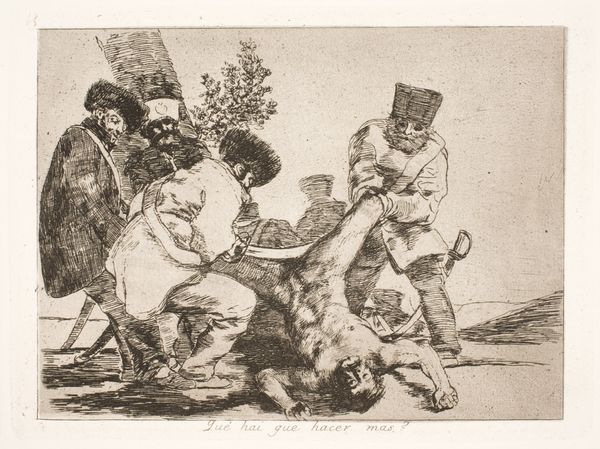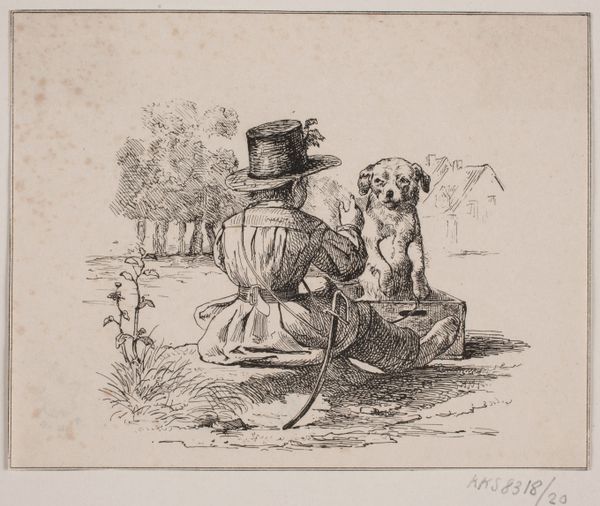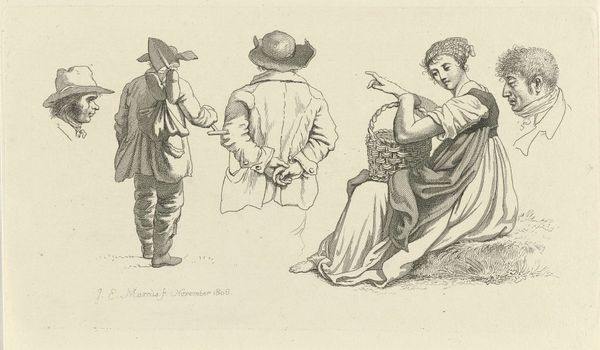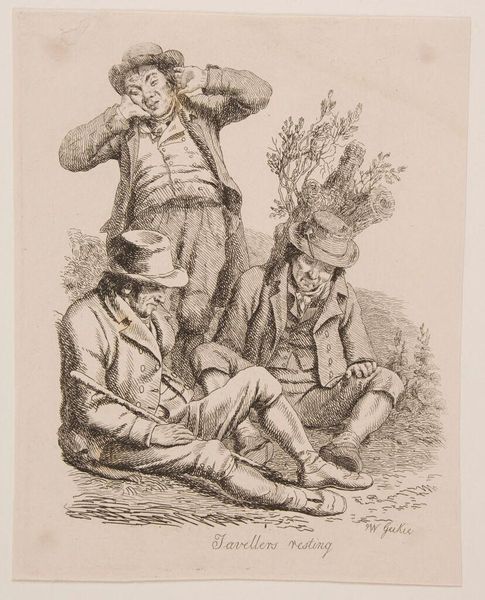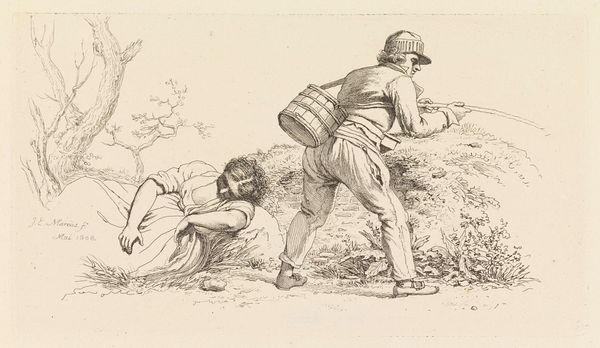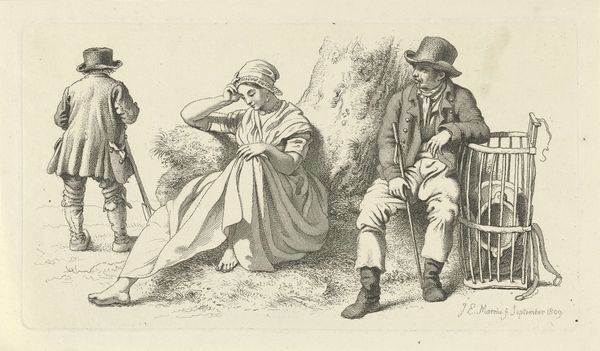
engraving
#
pencil sketch
#
landscape
#
figuration
#
romanticism
#
genre-painting
#
engraving
Dimensions: height 125 mm, width 176 mm
Copyright: Rijks Museum: Open Domain
Editor: Here we have Jacob Ernst Marcus's "Zittende en een staande man aan een strand," created in 1812. It's an engraving and it’s very finely detailed. There's a sense of weariness in the seated man juxtaposed against the standing figure’s seeming eagerness to get going, and then some miniature figures farther off in the background. How do you interpret this work, looking at the formal elements? Curator: Focus attention, first, on the balance achieved between the foreground and background. Note how the two prominent figures command our immediate gaze due to their size and detail. The formal relation, then, shifts subtly as the background figures offer a vanishing point, achieved using the texture of a more subdued linear representation. Do you agree? Editor: I do, and I see that interplay creating depth. Is that contrast in size a key part of its meaning, or rather a trick of composition? Curator: Let us think not of tricks, but tools. In examining closely the line work of the piece we see Marcus using various widths and densities to direct the gaze, adding meaning. Consider how light plays across the clothing. Does this create narrative in its contrast? Editor: I think it might; there is detail on the clothing that does make one look more closely to determine what is what. The contrast suggests a story even though it's such a small picture, just an engraving. The differences in treatment feel symbolic. I see it differently now! Thank you. Curator: Precisely! Paying close attention to the relationship between form and the depicted subject reveals profound depths in the artist’s creation. The close reading of the visual and material contributes a narrative quality that enriches the viewer's understanding and appreciation.
Comments
No comments
Be the first to comment and join the conversation on the ultimate creative platform.
